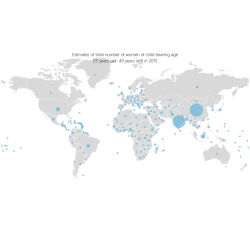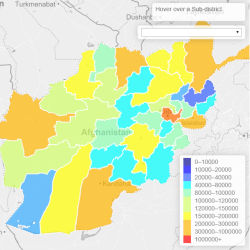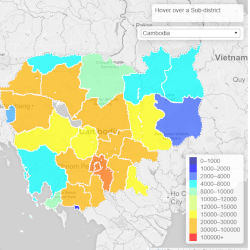High resolution global mapping of women of childbearing age, pregnancies and births for Zika burden estimation.
Contemporary datasets that depict the distribution of births and pregnancies are fundamental for estimating sub-national metrics of maternal and newborn health. These estimates can vary spatially within and between countries, and are influenced by the variability in age-specific fertility rates. Fine spatial resolution maps of births and pregnancies help to understand the public health burden of diseases such as Zika.
Estimates of the number of births and pregnancies for 2015 were produced for countries following the methodology described in James et al., In summary, this was achieved by identifying the women of childbearing age (WOCBA) from a gridded population map for each country and using age and sex census or UN data, grouped into seven 5-year groupings from 15 to 49 years of age. Birth counts were then estimated using age specific fertility rates. These were then multiplied with the WOCBA gridded data, for each age group, before summing, to estimate the total number of births. Finally, for each country, the distribution was scaled to match the UN national estimated births for 2015. Pregnancy estimates were further derived using data from the Guttmacher institute on stillbirths, miscarriages, and abortions, to calculate a pregnancies to births ratio, before applying it to the birth estimates to generate numbers of pregnancies.
The data for births and pregnancies presented in this website is summarised by the first level of subnational administrative units from GADM or nationally if no subnational boundaries are available. The data for WOCBA is summarised at the national level and by the first level of subnational administrative units from GADM or nationally if no subnational boundaries are available. These boundaries have been modified to match the extent of our data.
To download the dataset please follow the country’s link available here: Births, Pregnancies, Women of ChildBearing Age






